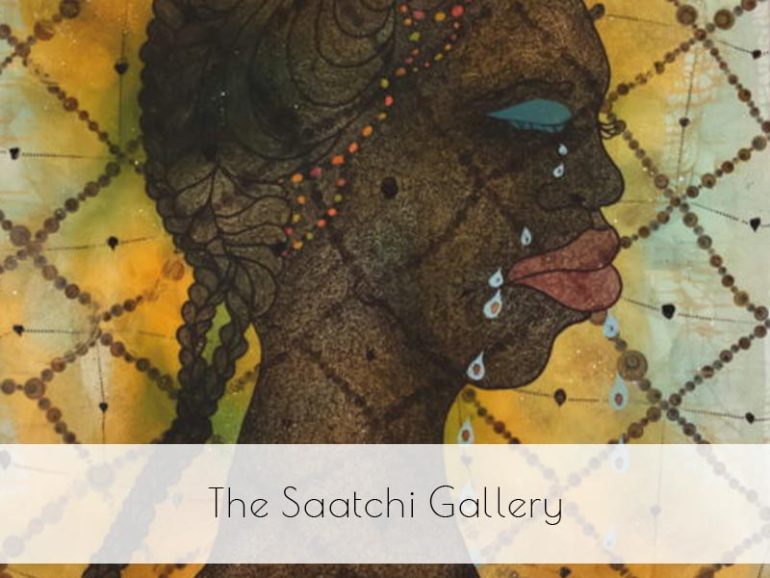The Saatchi Gallery, located in the heart of London, is a beacon for emerging artists and a hub of inspiration for art enthusiasts. The Saatchi Gallery was founded by Charles Saatchi in 1985 with the primary aim of showcasing contemporary art to the public.
Saatchi, an advertising mogul and art collector, opened the gallery in a disused paint factory in St John’s Wood, London. The gallery’s initial focus was on American minimalist and pop art, featuring works by artists such as Andy Warhol and Donald Judd. Over the years, the Saatchi Gallery has evolved, moving to several locations before settling in its current home at the Duke of York’s Headquarters in Chelsea, London, in 2008.
This prime location offers a spacious and versatile environment for exhibiting large-scale installations and a diverse array of contemporary artworks. The gallery is easily accessible, making it a popular destination for both locals and tourists.
Visiting the Saatchi Gallery is a visual feast, and there are certain pieces that you absolutely must see. Here are five of the most famous artworks housed at the gallery, along with a brief introduction to their creators and the context of their creation.
“My Bed” by Tracey Emin (1998)
Tracey Emin’s “My Bed” is one of the most iconic pieces of contemporary British art. Created in 1998, this installation is a direct and raw depiction of Emin’s life. It features her own unmade bed surrounded by personal items such as used condoms, empty bottles, and soiled underwear, when she spent a number of days lying in bed after a bad relationship breakup. The piece was shortlisted for the Turner Prize in 1999 and sparked significant controversy and conversation about what constitutes art. Emin, known for her confessional and autobiographical style, uses this work to confront themes of vulnerability, depression, and self-exposure.
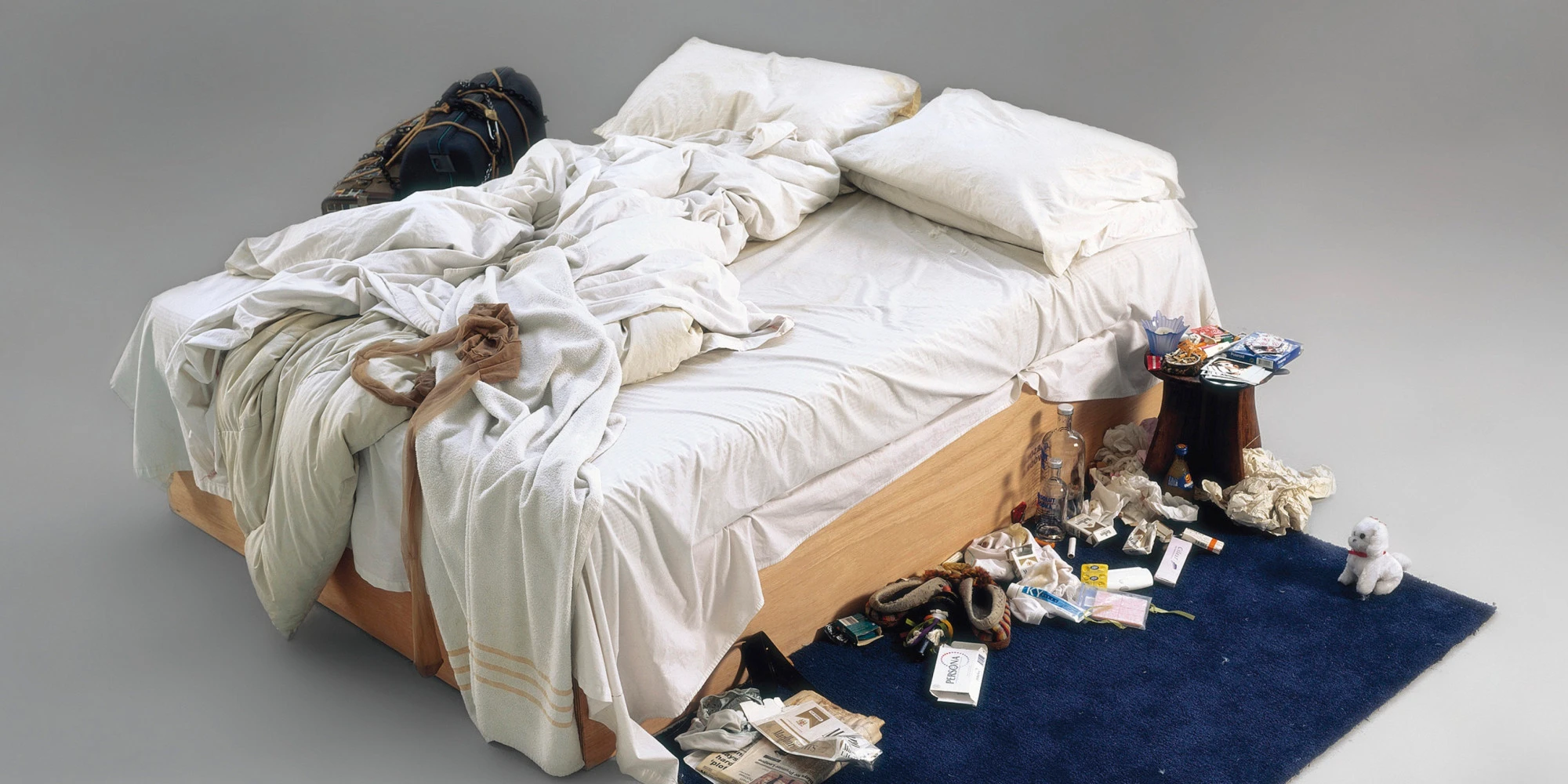
“Self” by Marc Quinn (1991)
Marc Quinn’s “Self” is a series of self-portraits made from the artist’s own blood, frozen into a silicone mould of his head. The first sculpture in this series was created in 1991, and Quinn has since made a new version every five years. Each sculpture requires approximately nine pints of blood, collected over several months. “Self” is a powerful exploration of mortality, identity, and the human condition. Quinn’s use of his own blood adds a deeply personal and visceral dimension to the work, making it both a scientific marvel and an emotional statement.
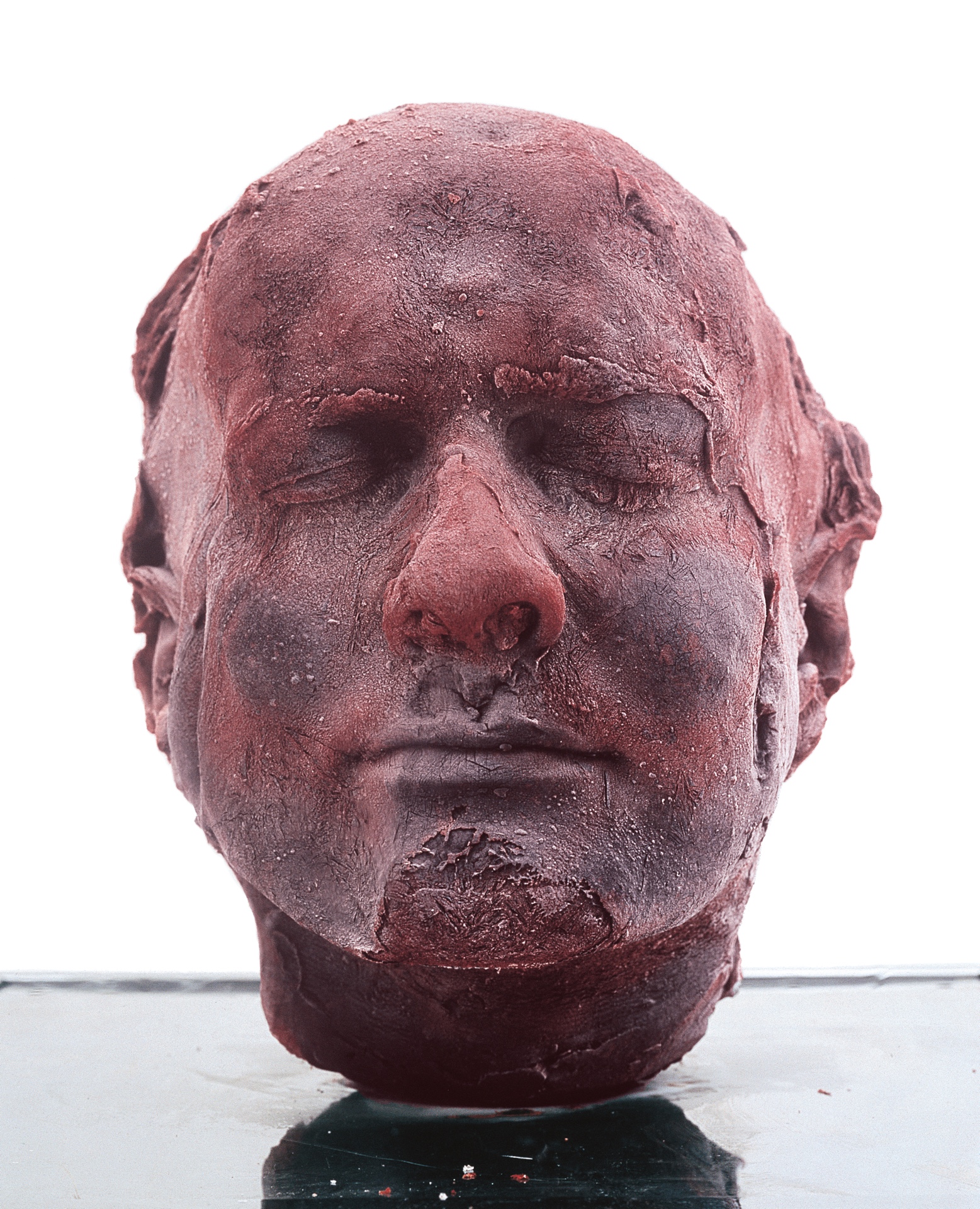
“The Physical Impossibility of Death in the Mind of Someone Living” by Damien Hirst (1991)
Damien Hirst, a leading figure in the Young British Artists movement, created “The Physical Impossibility of Death in the Mind of Someone Living” in 1991. This striking installation features a tiger shark preserved in formaldehyde, housed in a glass tank. The piece challenges viewers to confront their own mortality and the nature of life and death. Hirst’s work often provokes strong reactions, and this piece is no exception, raising questions about art, science, and the ethics of using real animals in artistic practice.
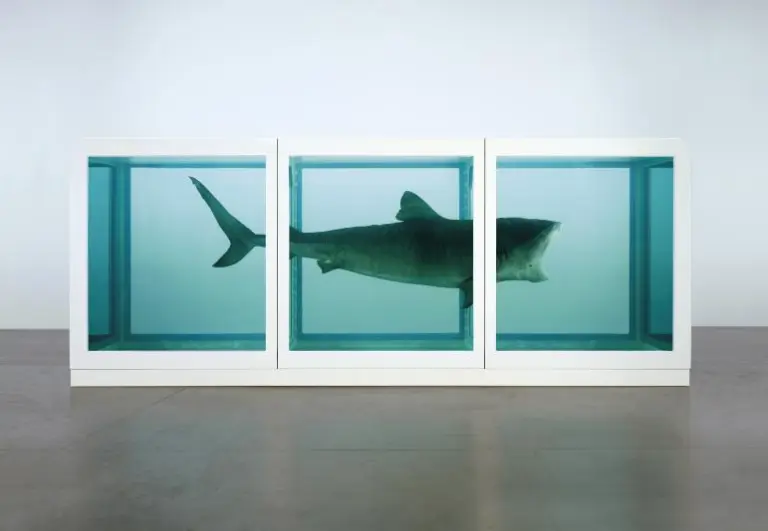
“God Is Great #2” by John Latham (2005)
John Latham’s “God Is Great #2” is a provocative and thought-provoking piece created in 2005. The artwork features three holy books—the Bible, the Quran, and the Talmud—encased in a sheet of glass that has been cut through. This piece is a commentary on the intersection and unity of the three major monotheistic religions. Latham, known for his conceptual and often controversial works, uses this piece to challenge viewers to consider the commonalities and conflicts between different faiths. The physical act of slicing through the books symbolizes the fragmentation and potential reconciliation within religious discourse.
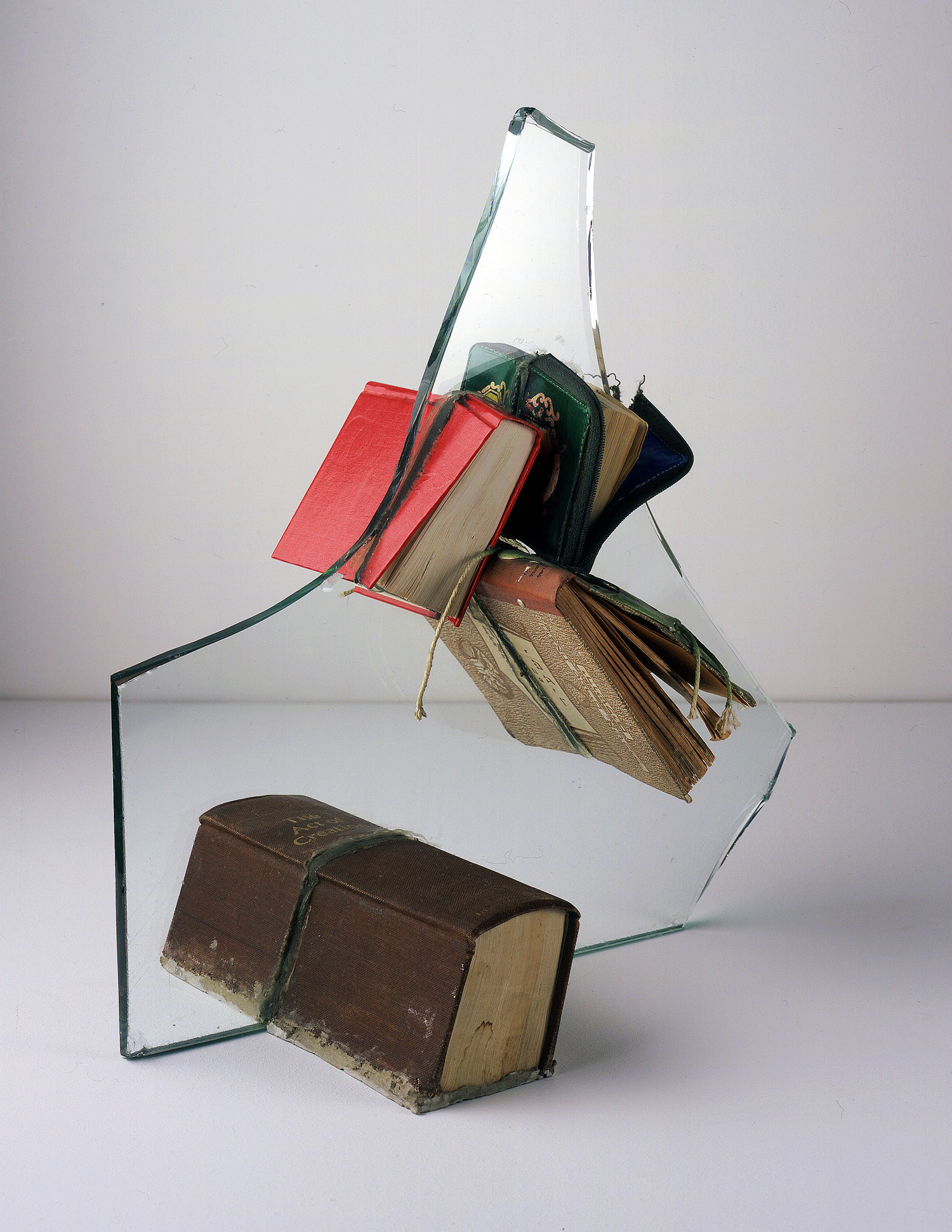
“No Woman, No Cry” by Chris Ofili (1998)
Chris Ofili’s “No Woman, No Cry” is a powerful and emotive painting created in 1998. The piece features a black woman crying, with each tear containing a photo of Doreen Lawrence, the mother of murdered British teenager Stephen Lawrence. Ofili’s use of vibrant colours, intricate patterns, and mixed media—including elephant dung—adds a unique texture and depth to his work. This painting is not only a tribute to Doreen Lawrence’s grief and strength but also a commentary on racial injustice and the resilience of the human spirit.
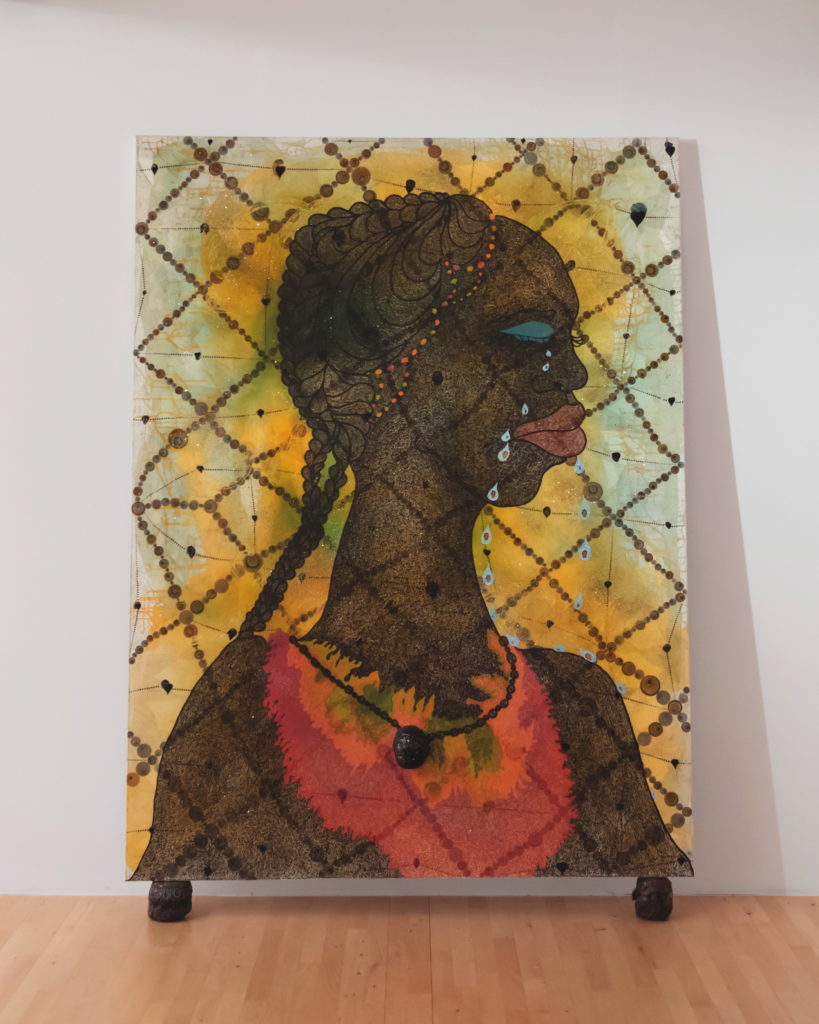
The Saatchi Gallery is more than just a space for viewing art; it is a platform for dialogue, innovation, and inspiration. For art students, it offers a unique opportunity to engage with contemporary art in a dynamic and thought-provoking setting. So, if you’re looking to broaden your artistic horizons and immerse yourself in the cutting edge of contemporary art, a visit to the Saatchi Gallery is an absolute must.
If you would like to receive a roundup of all of our blog posts once a week to keep you inspired in your inbox, why not sign up to our newsletter. You can access our sign up at the top of our page. If you are a London Art College student and you would like your artwork featured here, drop us a line at any time.

